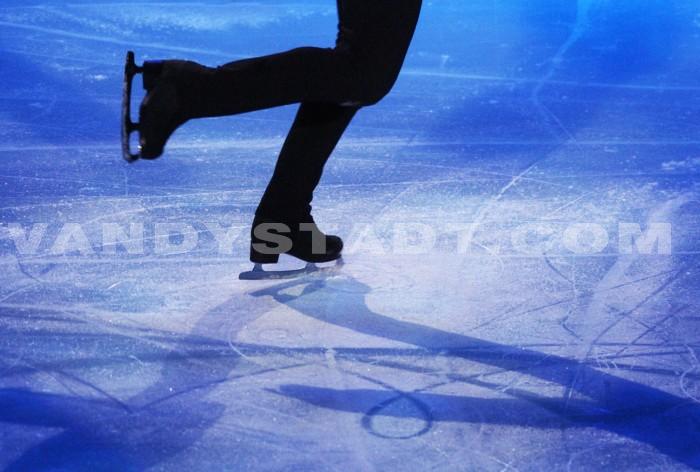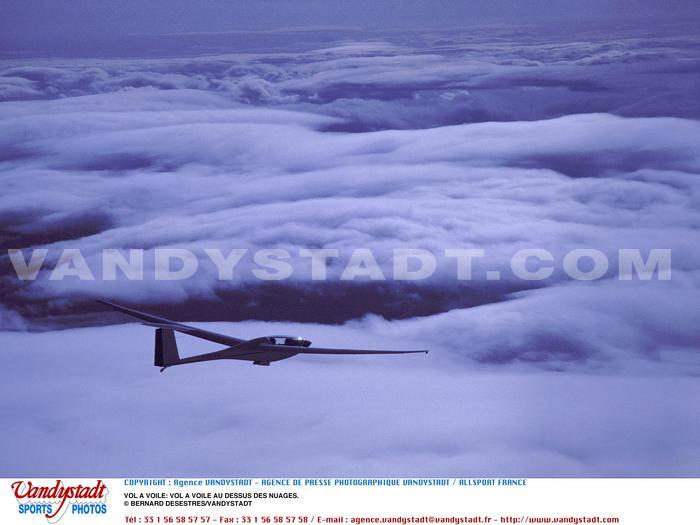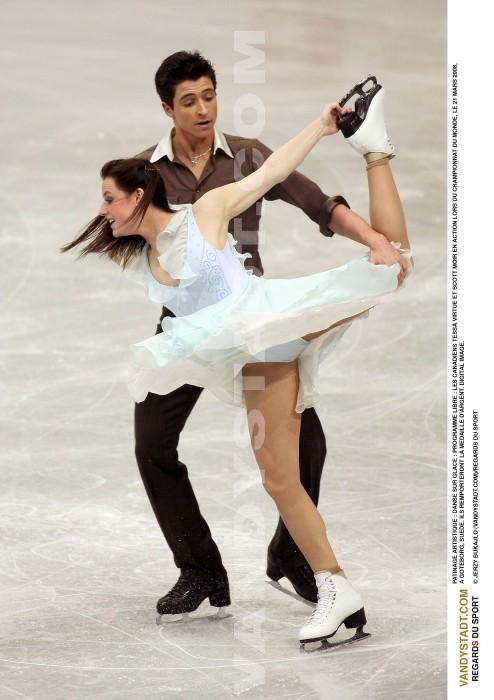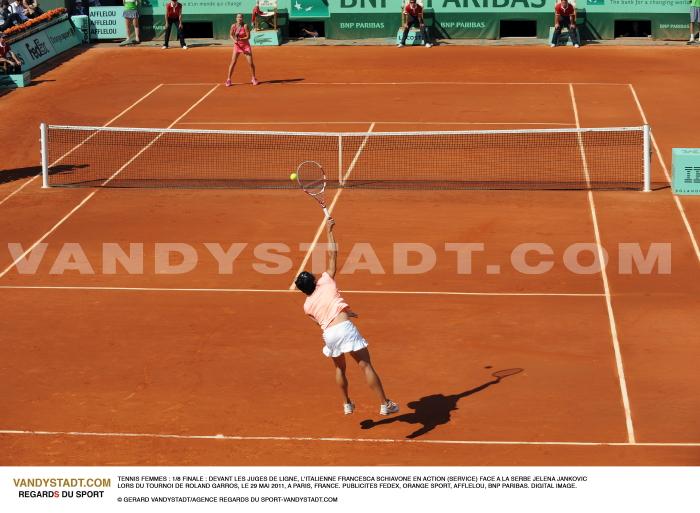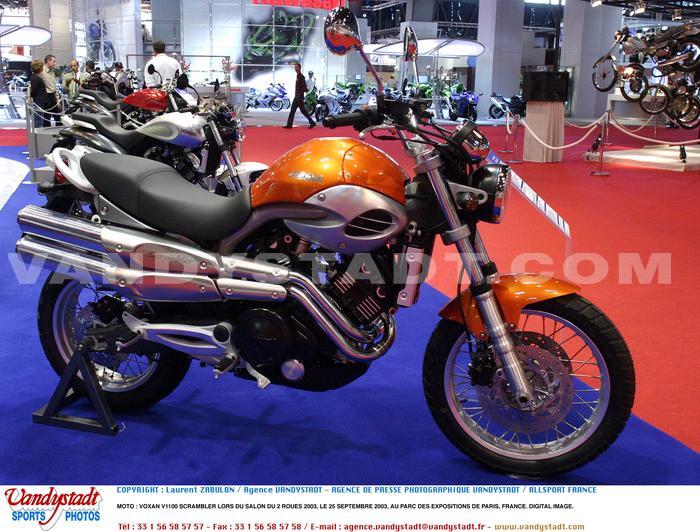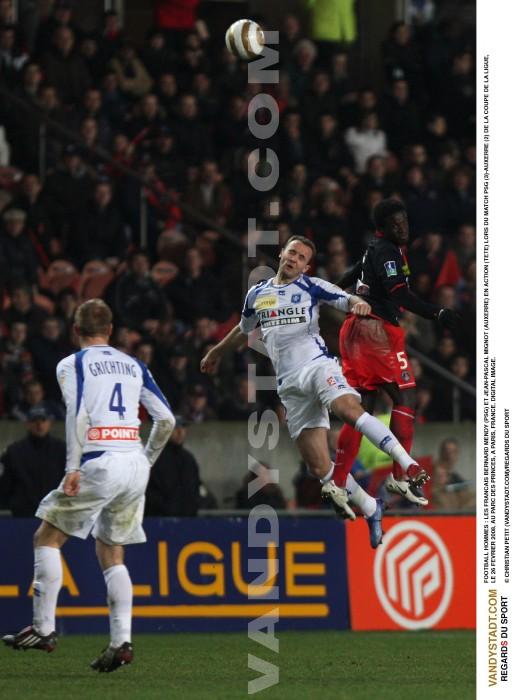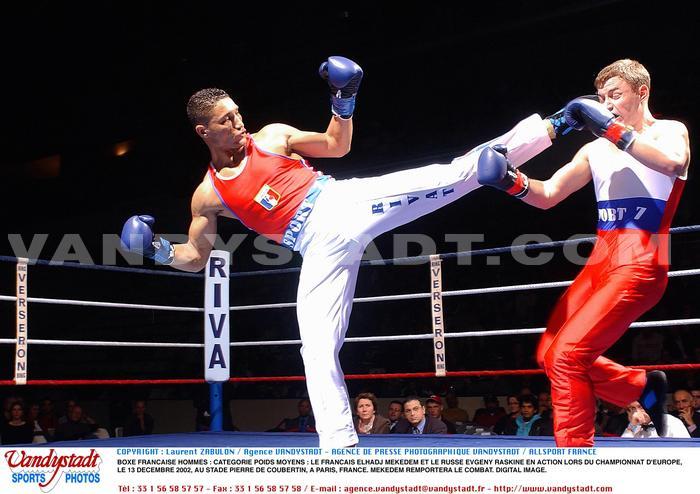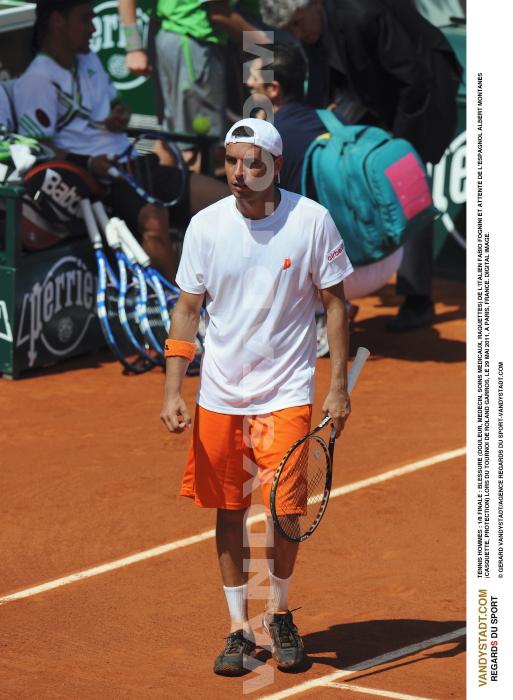Ski alpin - Alpine skiing history
Alpine Skiing- Olympic Sports
![]()
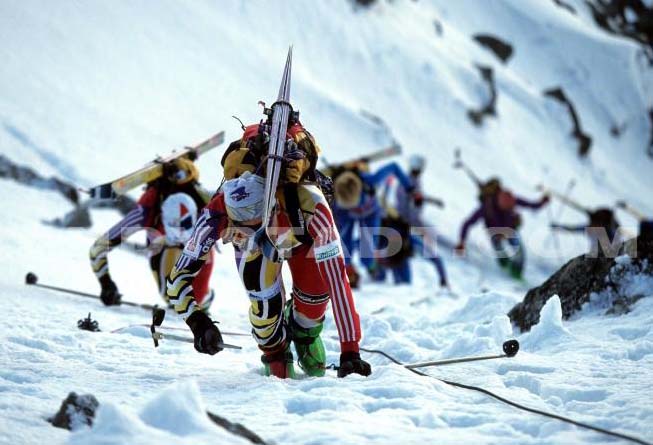
Skiing was originally a means of transportation in the Scandinavian countries and Russia.
History
Historically, snow was present in the natural environment of man. The men were quick to understand that supporting surface greater than their feet, facilitates the movement of snow. The shoes were first designed to protect feet from cold, they become carriers when using the skis and snowshoes. The latter will allow to walk on snow skis while providing an added dimension: the slides. Ancient representations found in Russia between 1930 and 1940, dating back at least 6,000 years, shows a hunter wearing skis in the middle of reindeer. The first cross was discovered in 1921 in Hoting, a village in northern Sweden. This ski (wood, length 1.10 m, width 10 cm, frame elongated, curved leather), preserved in Stockholm increased to 3 000 BC. The practice is lost in the mists of time. Discoveries of rock paintings and fossil skis in bogs Scandinavian tales of Greek and Roman historians trace this mode of transport well beyond the time where we could learn specific knowledge.
In Norway as skiing sport appeared in the mid 19th century. The first competitions (skiing) took place in the Telemark province where the first race was held in Tromso in 1843. This race was won by a Lapp who used batons to push and thus move faster. A first ski competition was held shortly after in Christiania in Norway ever. From 1870 the country adopted the cross as a national sport (the oldest ski association already been met founded in 1884).
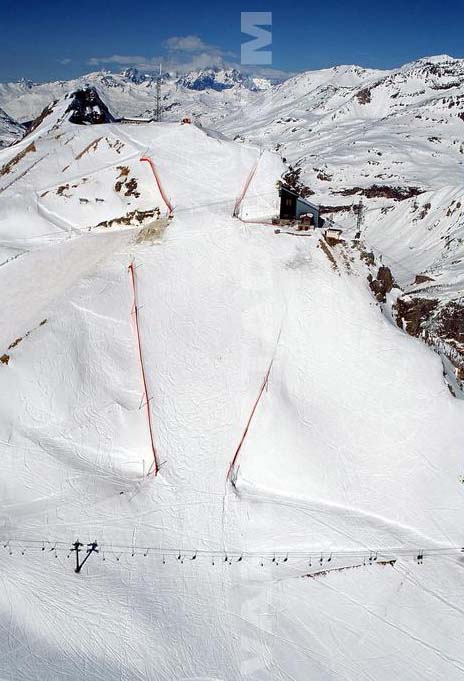
Fidtjof Norwegian explorer Nansen (1861-1930) recounted his journey to ski traversing Greenland from east to west in 39 days in 1888. Thanks to him, skiing was developed in Europe. Others followed his example by exploiting the Alps. Already Germany, Switzerland and Austria will find adherents followed closely by France, where skiing first appeared in the late 19th century. At that time, the Austrian Mathias Zdarsky changed the basic techniques of skiing through the development of metal fasteners.
Sondre Nordheim (1825-1897) NOR. He is considered one of the fathers of modern skiing. Hometown Morgedal in Norway, it has revolutionized skiing in the years 1870-1880 by inventing ties still allowing the skier to jump and turn without the risk of losing skis. He invented the ski 'Telemark' (closer to the middle) who was the prototype for generations of skis. He carried out a raid on skis linking Morgedal and Christiania (the former name of Oslo), be the first ski school. The Olympic flame for the 1994 Olympics in Lillehammer was lit in Morgedal, his hometown.
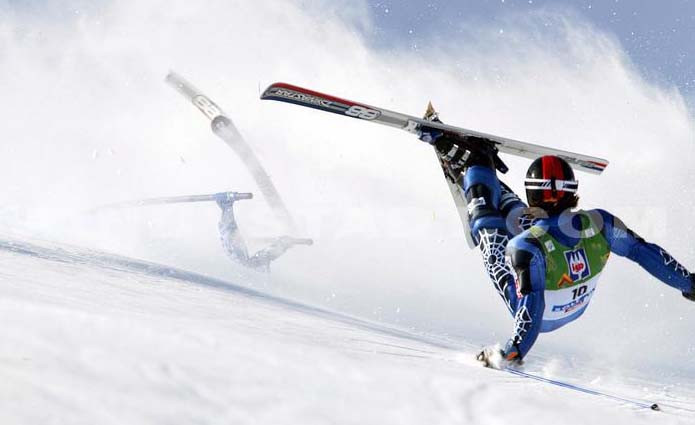
- The first alpine skiing
A raid took place January 6, 1911 on the Arlberg in Austria at the initiative of Lord Roberts of Kandahar (1832-1914), former officer of the Indian Army.
- This is another Englishman, Sir Arnold Lunn (1888-1974), residing in Switzerland, who invented skiing competition. He created doors planting flags and sticks, and organized the first slalom in Mürren in January 1922.
- In 1924, appeared a race involving downhill and slalom (combined) called Arlberg-Kandahar, which is considered the first real test of skiing.
The first ski club in the world was founded
1861 in Norway: "Ski Club of Trysil.
Skiing in France
It was during a visit to the Exposition Universelle of 1878 Henri Duhamel discovered large Canadian snowshoes and long, narrow boards that exposing Swedish recommended him for the journey over the snow. Upon his return in Dauphine, Duhamel tried to experience what his friends already climbing irreverently called the "boards". He experienced serious difficulties in setting this unit feet and it was not until 1889 that a whole literature on the use of the skis reach him what was then the Grand Duchy of Finland. Chamonix discovers his first pair of skis in 1890. Six years later, in 1896, the use of these skis had sufficiently developed among climbers Dauphinois that can be created the first French Ski Club. In 1900, skiing was introduced in the infantry Alpine Briançon.
The International Ski Federation
was founded in 1924 and has 102 affiliated nations in 2005. There are some 75 million practitioners worldwide, including 19 million in Japan.
The first world championships
were organized in 1931 in Mürren, Switzerland. However, between 1931 and 1941, they were not formalized by the International Federation. The first official edition took place in 1950 in Aspen to THE UNITED STATES.
.jpeg)
Considered the father of alpine skiing, Sir Arnold Lunn
(1888-1974) of the Ski Club of Great Britain, began in agreement with Dr Walter Amstutz (SAS Ski Club Academic Switzerland) to seek recognition of the descent and slalom, in the rules of international competitions. They promise the creation of an international federation of downhill skiing, in case the FIS does not deal with it. This ultimatum shows the arguments put forward, such as success in the Derby in 1924 and Parsenn programming Lauberhorn races for 1930.
Arnold Lunn
, a British officer, has succeeded in its challenge to Austria by establishing the first edtion of racing the Arlberg-Kandahar, in memory of his successful campaign in Afghanistan. Supported by influential friends, he embarks on a fight against the Scandinavian federations, not interested in the project. His persistence pays off, because he wins the case in 1930, during the session of the FIS, in Oslo. A year later takes place in Mürren the first confrontation World Alpine Ski, under the authority of the FIS and organized by the SC of Great Britain.
.jpeg)
Members of the IOC (International Olympic Committee) followed suit, but it was not until the Olympics in Garmisch in 1936, where participation restrictions vitiates this first experience. Finally FSS reacted immediately by setting up in 1929, an unofficial championship of men's downhill in Arosa, won by native son David Zogg
.
The key dates of the French Ski
- 1933: a training instructor creates Mont Revard (Aix-les-Bains in Savoy). A diploma and an insignia are awarded to successful candidates.
- 1936: first Olympic medal French resorts: the bronze combined for Emile Allais.
- 1937: For the first time a French won a title of world champion Chamonix: Emile Allais, winning the combined after winning the downhill and slalom.
- 1962: Chamonix organizes once again the world championships.
- 1966: France team won 16 medals in 24 World Championships in Portillo in Chile.
- 1982: the Federation created a license called "Snow Card" to better meet the expectations of casual practitioners (then approx. 4.5 million people) who do not wish to participate in the competitions.
- 1987: Cape of one million licensees is reached with 960 000 members Carte Neige.
- 1992: France hosts the 16th Olympic Games in Albertville in Savoie.
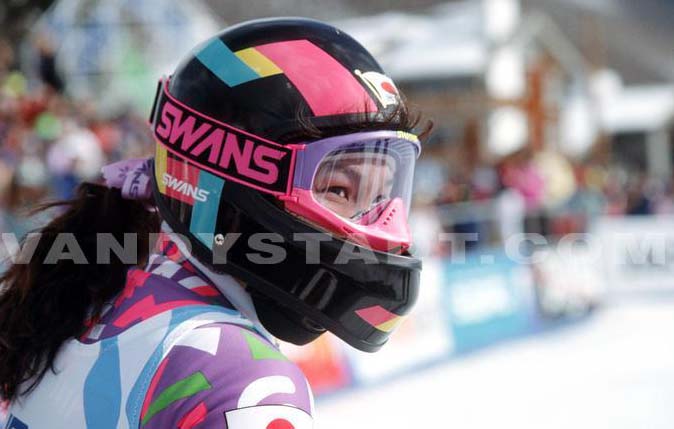
Emile Allais (25-2-12) FRA. With its revolutionary technology, the parallel turn, he won 8 medals at the world championships between 1935 and 1938: 4 gold medals (combined downhill and slalom in 1937, combined 1938), 4 silver medals (in descending 1935 and 1938, slalom in 1938, combined 1935). Also bronze medalist in the Olympic combined in 1936 (first French Olympic medal in skiing). He was a founder of the French Ski School in 1938. Today, the ESF has some 13 000 monitors.
Skiing in France
at the dawn of the 3rd millennium is:
- 9 million skiers (some 2 million foreigners) including 2 million casters and 2 million foreigners.
- 80% of skiers and snowboarders 20%.
- 520 000 pairs of skis sold in 2004 (4 million worldwide) - 70 000 snowboards and 40 000 pairs of Nordic skis.
- 3rd French sport surpassed by football and tennis.
- 431 stations in 5 different masses (Jura, Pyrenees, Vosges, Massif Central and foremost in the Alps).
- A ski area of 1 681 sq. km (the largest ski area in the world).
- 4 150 lifts located between 600 and 3 900 m altitude.
- 6 000 marked runs
- 13 000 km of groomed trails (240 sites) with thousands more off-piste routes.
- It is the largest ski area in the world!
- 13 000 ski instructors and 3 000 mountain guides.
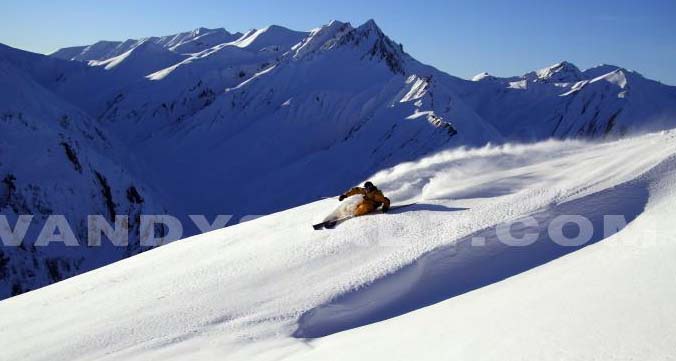
In France, during the winter holiday in the mountains:
(15 358 graduates in alpine skiing, 3 075 in cross country, 249 in ski jumping and biathlon 169)
- 43.5% of French are skiing downhill
- 11.3% are cross-country skiing
- 4% are surfing - 9.9% are hiking
- 7.8% are other winter sports (skating, sledding, etc..).
Milestones skiing
- 1843: first race held in Tromsø, Norway
- 1896: first French Ski Club in Chamonix
- 1924: creation of the Federation Internationale
- 1931: first World Championship in Mürren in Switzerland, not recognized by the federation
- 1936: introduction of the combined (downhill slalom more) Olympic Games
- 1948: emergence of downhill and slalom at the Olympic Games
- 1950: First World Championship recognized by the FIS in Aspen USA
- 1967: First World Cup
- 1988: First Super-G Olympic Games
Competition
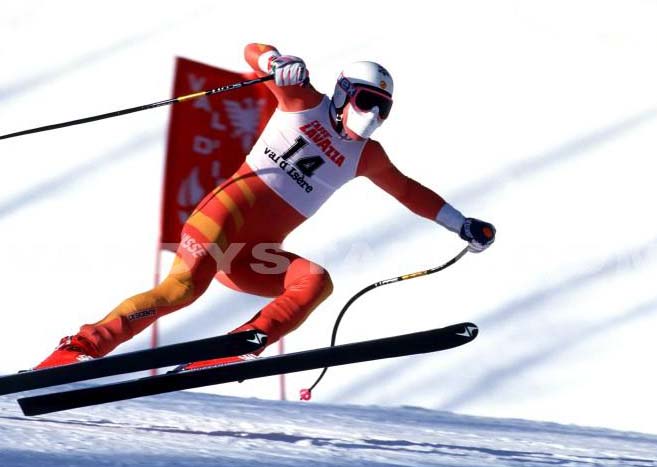
There are two disciplines in alpine skiing:
- The speed disciplines such as downhill and Super G
- The technical disciplines, including the giant slalom
These are all racing against the clock with staggered departures. Any deviation of the route is eliminated.
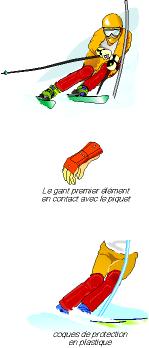
The oldest winner of a downhill World Cup is Marco Büchel of Liechtenstein by winning the downhill in Lake Louise USA in November 2006 at age 35 (old record: Austrian Stephan Eberharter , at age 34 by winning at Kvitfjell in Norway in 2003/04). It is also the oldest winner of a stage of World Cup all disciplines. In women, the record is held by Michaela Dorfmeister , who won the downhill in St. Moritz in 2005/06 to almost 33 years.
Most spectacular is the test "queen" of the Alpine skiing combined the speed control curves in a path of ascent important uses up the terrain profile. Skiers descend on average more than 100 km / h (maximum speed can reach 150 km / h) with steep slopes of straight lines, curves and jumps mounds. The tracks are delimited by "gates" made up of 2 red stakes spaced more than 8 m. The passages through the woodland will have a width of at least 30 m. This does not mean that all parts of the track will have more than 30 m, because the action of sun and wind could have a negative influence on the snow in some parts of the track width too large and poorly protected. Skiers have 3 days of testing to better know the track. The tests are run in one inning. First place was awarded to the fastest time.
.jpeg)
It was Jean Vuarnet , the Olympic downhill champion in 1960 who invented the famous position of the egg to the quest for speed, a real revolution in the technique of the descent!
The track men
It must meet the following technical data:
- Lane width: 40 m.
- Leveling least 500 m.
- Leveling up to 1 000 m.
- Door width Required: at least 8 m.
The length of a downhill run up to 4 500 m.
The two longest tracks in the World Cup are in Switzerland: Kandahar in Mürren and Wengen Lauberhorn.
The Austrians Hermann Maier and Stephan Eberharter are the only ones who have won four mythical raids in World Cup to be held in January: 1. Wengen, 2. Kitzbühel, 3. Garmisch, 4. Chamonix.
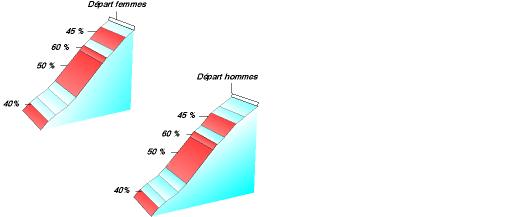
Runway ladies
It must meet the following technical data:
- Leveling minimum 500 m.
- Maximum vertical drop: 700 m.
- Door width required: at least 8 m.
The great descender Switzerland Bernhard Russi , world champion and 1970 Olympic champion in 1972 is also a specialist in tracing the descent. He is the Olympic pistes of Val d'Isère for the 1992 Olympics, Lillehammer 1994, Nagano 1998 and Salt Lake City in 2002. He also created the famous trail of the 'Birds of Prey' the Beavers Creek / Vail, which hosted the men's downhill of the World Cup in 1999 and the track Corviglia St. Moritz for the descent of the World 2003.
.jpg)
Val d'Isere is allowing the most runs in WorldCup. Having celebrated its fiftieth anniversary in December 2005, it hosted a record 124 races (the handsets are not counted does not involve a real departure) into 68 males and 56 females.
In second place comes the Austrian resort Kitzbuhel with 94 races (exclusively male) while lying Beaver Creek in Colorado complete the podium with 74 tests including 40 men.
Megeve and St. Gervais organized 24 races each followed by Chamonix with 20 tests.
The oldest stations organizing events in the World Cup is the Swiss resort of Wengen, which celebrated its seventy-five in January 2005. The Lauberhorn is also the longest with 4.5 km and a vertical drop of 1,025 m.
Records
:
The record of alpine speed is 156.520 km / h set by the Canadian Erik Gay in 2006 during the descent of the combined World Cup in Wengen on the Lauberhorn, the track's fastest circuit. The previous record belonged to the Austrian Michael Walchhofer with 151 kph in 2005.
The special slalom
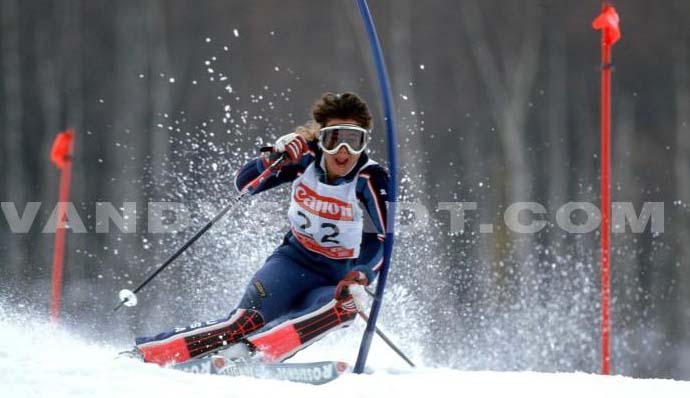
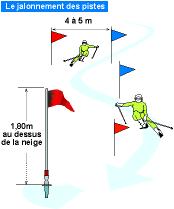
Slalom: Norwegian 'slalam' or 'sla' meaning 'slope' and 'lam' or 'trace skis'.
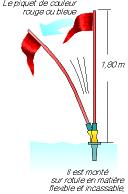
Technical discipline and dramatic timeliness and appearance made by violent contact with the pegs, it asks the fighting, vivacity and technique. Skiers must zigzag between a number of stakes (minimum 55 gates and doors for maximum 75 people, minimum 45 and maximum 65 gates doors for women) without forgetting. One picket pin defines every turn. The doors are 4 to 6 m wide and the space between each door is 0.75 m minimum.
The red doors alternate with the blue doors to draw a very tortuous route. Some (baffles) are chained fast while others are placed vertically forcing the skier to make a turn more difficult. The slalom is held on one day in 2 runs down two different courses on the same slope. The winner is he who is the fastest two heats.
Tracers of course, for most national coaches are appointed by the event director
Unevenness Slalom
For shopping, the drop should be 140 to 220 m for men and 120 to 200 m for women.
In slalom, the average speed is 40 to 45 km / h with peaks at 65 mph!
Giant Slalom
.jpeg)
Resembling a slalom with fewer turns and less slopes, giant slalom takes place on trails longer and broader than in slalom with a minimum of 30 gates and a maximum of 58 gates (through 50/55), farther apart than slalom (minimum 12 gates for every 100 m to go). The doors are 4 to 8 m wide and are separated by 10 m. The giant is also taking place in 2 rounds on two different courses on the same slope. The géantistes have an hour to recognize the line, that with skis on their feet or slip up along the route.
Unevenness Giant
For shopping, the drop should be 250 to 450 meters for men and 200 to 400 m for the ladies.
The Super G
.jpeg)
The Super G or Super Giant is located between the giant slalom and downhill. It combines the speed of the downhill and giant slalom track. He fights in a single run on the downhill run on a route that is shorter than in downhill and giant slalom that long. Skiers know the route the day of the race in one hour before skidding.
The number of doors for the Super G slalom is at least 35 men and 30 women, excluding the starting gate and the arrival gate. There are two kinds of doors: doors open to a width of 6 to 8 m and blind doors wide 8 to 12 m placed at 25 md'intervalle. The gates are placed every 25 m and are either open (in the direction of the slope; DE 6 to 8 m wide) or blind (perpendicular to the slope De 8 to 12 m wide).
Unevenness Super-G: Minimum of 500 m and maximum of 650 m.
The first Olympic title in history in Super G, awarded in 1988, was won by the French Franck Piccard .
The combined
This is an official event since 1982, which consists of a downhill and a slalom in 2 innings. Skiers must obtain an overall result in cumulative time on these two tests.
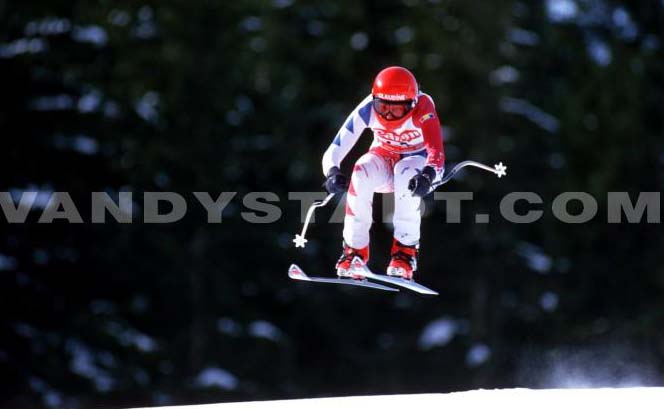
The differences in speed competition
- 50 mph in slalom
- 70/80 km / h in giant
- 100 km / h super-G
- 150 km / h downhill
Sticks
Downhill, giant slalom and super-G, the poles are bent to provide less air resistance during the descent
In slalom, the sticks are straight. The handle is reinforced to protect hands when crossing gates.
The test period
- Downhill: 1 minute 15 between 2 minutes and 30 race
- Super-G: from 1 minute 10 and 1 minute 50 race
- Special Slalom: 35 to 60 seconds per round
- Giant slalom: 1 minute to 1 minute 30 seconds per round
Number of wins (race full without combined) per station in World Cup:
- 8 wins Ingmar Stenmark in Madonna di Campiglio ITA (5 giant slaloms and 3)
- Alberto Tomba , 6 victories in Sestriere ITA (5 slaloms and 1 down) and Hermann Maier in Kitzbühel AUT (5 Super-G and downhill 1)
- 5 wins Ingmar Stenmark in Kitzbühel AUT (5 slaloms) Adelboden SUI (5 giants) and Are SUE (3 giant slaloms and 2), Alberto Tomba in Kranjska Gora SLV (3 and 2 giant slaloms), Hermann Maier in Kvitfjell NOR ( 3 super-G and 2 runs) and Garmisch Partenkirchen ALL (3 Super-G and 2 runs)
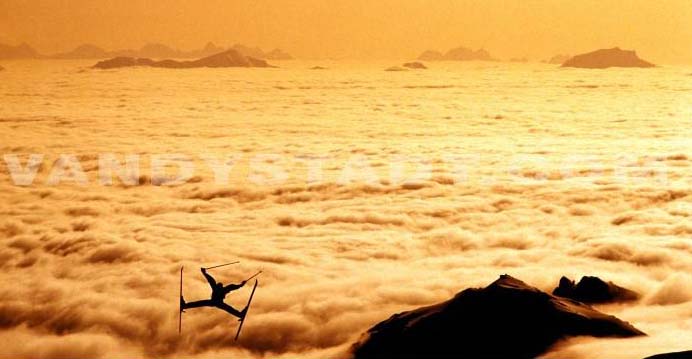
Equipment
Fixings: can fix the ski boot in case of fall, fasteners are triggered.
The boots firmly around the foot, leaving enough freedom to perform ankle skiing techniques, provide a transfer of movement to the skis when turning, the distance between the sole of the boot and the base of the heel does not exceed 43 mm.
Sticks: downhill and super G: curved to fit around the body and reduce air resistance; slalom and giant slalom: rights and have plastic protectors that cover the joints of fingers to protect against injury when the athlete reverses the door on the course.
Helmets: Required in all tests; helmets must have a shell and a foam covering the head and ears; helmets with protrusions as a deflector or an edge are allowed, must be certified by a recognized security organization; a chin guard is allowed in the slalom to protect the skiers' faces when they walk through the doors.
Ski goggles: protect the eyes against weather conditions, glare and cons effects of speed on the eyes can use
straps color lenses for maximum contrast and visibility can not be remodeled to improve the aerodynamic properties.
Combinations: combinations hugging alpine skiing are used to reduce air resistance, an index average minimum permeability of 30 liters per m² when subjected to 10 mm of water pressure; slalom combinations may be specially protected at the shoulders, arms and legs.
The back protection: protects the spine and lower back should follow the curvature of the spine of the athlete and tighten the body thickness should not exceed 45mm; worn under the suit.
Gloves: provides protection against weather and external forces, it is forbidden to reshape the glove to make it more aerodynamic, the glove does not exceed the elbow.
Skis:
usually made of wood fiber composites and a wax is applied to the underside, called the sole, to improve its gliding properties "spatula," the front of the ski is raised "heel" of the rear Skiing is slightly raised "the edge", a strip of metal edge skis allow skiers to catch the snow when turning
The skis are subject to lengths and widths * ** minimum standard by the FIS in each discipline:
|
|
Men |
Ladies |
||
|
Sport |
Length |
Width |
Length |
Width |
|
Downhill |
215cm |
67mm |
210cm |
67mm |
|
Super G |
205cm |
65mm |
200cm |
65mm |
|
Giant Slalom |
185cm |
65mm |
180cm |
65mm |
|
Slalom |
165cm |
63mm |
155cm |
63mm |
* Does not include portions reported, tolerance of + / - 1 cm, the length must be indicated on the skis
** The sliding surface at fixation, with no tolerance
The nose must have a minimum height of 30 mm ski downhill and super-G and a minimum height of 50 mm in slalom and giant slalom.
The heel has a maximum height of 10mm.
There are six different kinds of skiing
- Skiboarding: Ski short (max. 1 m) for acrobatics or learn to ski.
- Freestyle: Ski traditional, but is similar to snowboarding and allows the same (same length as snowboards).
- Real Carving: For major curves, the body touching the snow sports!
- Allround Carver: The cross-monsieur (or madame) everyone. Ski facilitating turns and shorter than a conventional ski.
- Freeride: Ski runs wide spatula, perfect for powder, for off-piste (with monitor!).
- Racing: Ski racing, made for speed and for the slalom.
All about other snow sports
The KL or Kilometer launched
It's a race of pure speed on a slope in a straight line in which the skier rushes to reach the highest speed.
In the 19th century, gold miners were the first American skiers speed downhill ski slopes in a race against time. The first unofficial record belongs to Tommy Todd, who in 1870 reached a speed of 150 mph on a track in California. The first certified record belonged to Italian Leo Gasperi, which was established in 1931 in the Swiss resort of St. Moritz with a speed of 136.600 kilometers per hour Shortly after, the Italians were organizing an annual event, the 'Kilometro lanciato' on a track a mile across the glacier Breithorn Kl.Matterhorn. The world championships are held every two years since 1995. Past winners sacred in 2005: Tracy Sachs U.S. women and Simone ITA Origone men.
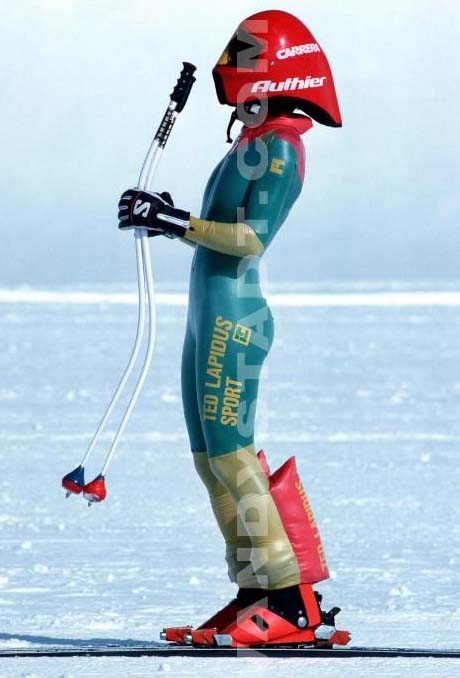
Speed skiing was a demonstration sport at the Olympic Games in Albertville in 1992 on the trail of Arcs. Won among men by the French Michael Prüfer by spraying the world record in 229, 99 km / h in women with Finland's Tarja Mula at 219.245 kilometers per hour
The competition is open to skiers who have already reached a speed of 180 km / h for men and 170 km / h for women.
- The length of the runway is 1 200 meters
- The area momentum of the track is 450 meters
- The timing zone is 100 meters
- The area of deceleration and braking is 850 meters
- The average gradient is 52% (from 76% to 45%)
- The track is devoid of bumps.
Among the 32 licensed tracks: Les Arcs, Vars and La Plagne FRA, SUI Verbier, Cervinia ITA, Salla FIN, Sun Peaks Whistler / Blackcomb CAN, Timberline and Mount Hood USA.
Do you know that the skier moving at 69.6 meters per second and covers 100 meters in 1.43 seconds! Recognizable by their gear aerodynamics, they use skis very long and wide to reach speeds around 240 km / h.
·
The record in speed skiing
- KL Men: 251,40 km / h Origone Simone ITA 2006
- KL Women: 242.590 km / h par Sanna Tidstrand SUE 2006
- Monoski: 212.26 km / h by Xavier Cousseau FRA in 2006.
- Unijambiste: 213.65 km / h by Mickaël Milton FSU in 2006.
- Snowboarding: 201.907 km / h by Darren Powell FSU in 2002.
The Stars of KL
Philippe Billy (2-10-65) FRA. First man to exceed 230 km / h km launched in 1996 in Vars. He was then brought to 243.902 kilometers.
Harry Egger (2-11-65) TUE. World champion speed skiing in 1994 and Europe in 1998. World record in 1999 at 248.105 kilometers per hour In April 2002, he raised it to 248.28 km / h in Lech, Austria.
Goitschel Philippe (13-1-62) FRA. Nephew Marielle and Christelle. Olympic silver medalist in 1992 world champion in 1990, 1995, 2000 and 2002. It is the first man to exceed 250 km / h on skis: 250.700 km / h achieved at Les Arcs in April 2002.
Jeffrey Hamilton (22-11-66) USA. Three times world champion in 1997, 1998 and 1999.
Origone Simone ITA. The fastest man on skis, achieving 251.40 km / h on the track of Arcs in April 2006. Winner of the World Cup in 2004 and 2006 world champion in 2005. His younger brother, Ivan finished 3rd in the World Cup in 2006 by achieving 250.70 km / h equaling the record set by Philippe Goitschel in 2002.
Prüfer Michael (6-11-59) FRA. Olympic Champion in 1992 (demonstration sport) by pulverizing the world record of 229.99 kilometers per hour
Viitassari Jukka FIN. FIS World Champion in 2001 and 2003. In 2003, his sister Jaara won the title in women.
Women
Dubouchet Karinne (1-1-71) FRA. World record holder kilometer launched from 2002 to 2006 with 242.260 kilometers per hour Seven times world champion between 1996 and 2002.
Mulari Tarja (born 1965) END. 1992 Olympic champion and former world record holder (219.245 km / h in 1992).
Sanna Tidstrand SUE. Record holder of KL since April 2006 to 242.59 km / h achieved in Les Arcs. World champion in 2005 and 2006.
Telemark
Sport or skiing technique ancestral name of the Norwegian province, elegant to behold, which dates from 1868. It was supplanted in favor of techniques using the skis parallel at the beginning of the century. Halfway between the traditional skiing and ski touring, telemark reborn in the USA in 1974. In 1987 the first competitions were held (one World Cup and world championships are held annually). The skis are wider than conventional skis. This discipline is similar to skiing because the beads are released. Turns are made by genuflection. A long wooden stick held in both hands allows the balance. As for skiing, keeping very typical consists of leather shoes, thick socks and knickers. The French Association of Telemark (AFT) was founded in 1987 on the initiative of the stations of St Gervais and Chamonix.
Ski Mountain
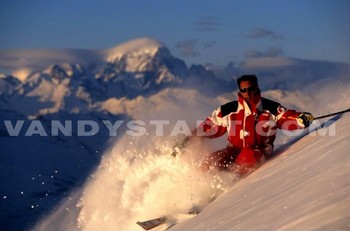
The ski mountain (before: ski mountaineering) is managed by the International Mountaineering and Climbing Federation (UIAA). It's an endurance of about 20 km which lies between the skis and hiking in alpine skiing. The skier-mountaineer climbs to the top of seal skins and ski down. The ski mountaineering has been on the agenda of the Games from 1924 to 1948.
The test reference ski mountain is the "Pierre Menta" in Arêches-Beaufort in the massive Beaufortain. In four days, the skier must pass fifteen climber summits with ten thousand meters of altitude (a duo for three days and in
iduel the last day of competition).
Other big races: the Patrouille des Glaciers in Switzerland, Italy Mezzalama that occurs more than 4 000 meters above ground ice.
Ski Freeride
This extreme skiing terrain and all snow, a mix of waterfalls, downhill skiing and acrobatics. It's free skiing, the ancestor of all forms of snow sports and skiing off-piste without limit and unusual. The free-ride takes place on natural slopes and virgin at 40 degrees across ledges, steep walls, the snow slides and rock bars, jumping, running or doing tricks. It is also skiing in the "snow parks" developed in half pipe, 1 / 4 pipes, big air and skier-cross. It is the creation of barriers on which skiers invent air figures. The first official competition took place in freeride Valdez in Alaska in the 80s. European competitions have existed since 1992.
Since 1998, the World Tour takes place under the auspices of IFSA (International Free Skiers Association) with 5 major competitions (sites selected in 2000: CAN Whistler, Snowbird Utah USA, Solden AUT, Courchevel FRA).
Among the French skier of the impossible, that marked forever the freeride ski, it may appoint Patrick Vallençant (founder of the first school of extreme skiing in Chamonix), Sylvain Saudara, Jean-Marc Boivin and Pierre Tar
el (first to ski down Mount Everest in 1992).
- The French Arnaud Adam and Guerlain Chicherit became world champions of extreme skiing respectively in 1998 and Arnaud in 2000 and 2002 for Guerlain.
- Denis Rey, a former teammate in the team of France Luc Alphand , Jean-Luc Cretier and Franck Piccard , won the famous X-Games (or Games of the extreme) in 1998.
Equipment
Copyright Sportquick/Promedi








